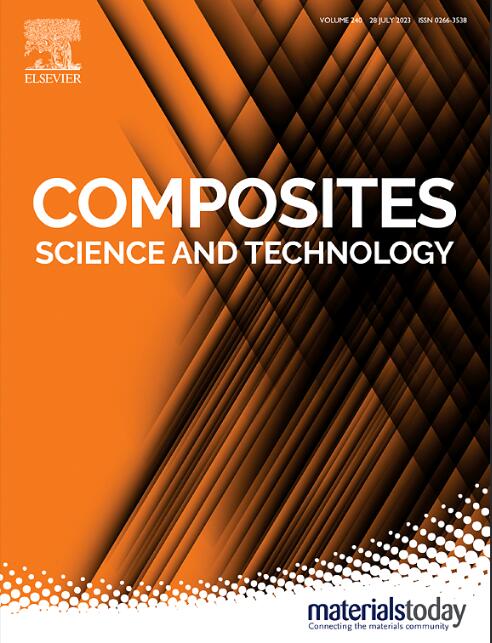物理交联优化的超低C60聚醚酰亚胺纳米复合材料高温电容储能
IF 8.3
1区 材料科学
Q1 MATERIALS SCIENCE, COMPOSITES
引用次数: 0
摘要
薄膜电容器的极端工作环境迫切需要新一代聚合物电介质材料。基于聚合物的复合材料在卓越性能和大规模工业化生产方面是一种更有效的选择。本文选择 C60 作为功能填料,通过静电相互作用与商用聚醚酰亚胺(PEI)结合,构建聚合物纳米复合材料(C60/PEI)。由于 C60 粒子的物理交联点作用,超低填充 C60/PEI 纳米复合材料实现了电气、热和机械性能的全面改善。C60 因其独特的零维笼式结构和高电子亲和力而具有很强的抑制电子转移的能力,从而降低了高温下的传导损耗。理论和实验结果表明,在聚乙烯醇中引入微量 C60 粒子可构建稳定的载流子陷阱,显著改善高温储能特性。在 150 °C 时,介电常数和击穿强度分别从 PEI 的 3.24 和 447 MV/m 提高到最佳 C60/PEI 纳米复合材料的 3.45 和 520 MV/m。因此,最佳 C60/PEI 纳米复合材料在 150 °C 时的放电能量密度 (Ud) 达到 3.69 J/cm3,高于 PEI 的 2.65 J/cm3。这为协同提高聚合物纳米复合薄膜在高温储能应用中的综合性能提供了一种便捷而有效的策略。本文章由计算机程序翻译,如有差异,请以英文原文为准。

Physical crosslinking optimized high-temperature capacitive energy storage of polyetherimide nanocomposites with ultralow C60 particles
The extreme operating environments of film capacitors have created an urgent need for a new generation of polymer dielectric materials. Polymer-based composites are a more efficient option in terms of outstanding performance and large-scale industrialized production. Herein, C60 is selected as a functional filler to be combined with commercial polyetherimide (PEI) through electrostatic interactions to construct polymer nanocomposites (C60/PEI). Ultralow-filled C60/PEI nanocomposites achieve the comprehensive improvement of electrical, thermal and mechanical performance due to the physical cross-linking points acted by C60 particles. C60 shows a strong ability to inhibit electron transfer due to the unique zero-dimensional cage structure and high electron affinity, which reduces the conduction loss at high temperatures. Theoretical and experimental results show that the introduction of trace amounts of C60 particles into PEIs constructs stable carrier traps and significantly improves the high-temperature energy storage characteristics. The dielectric permittivity and breakdown strength are increased from 3.24 to 447 MV/m for PEI to 3.45 and 520 MV/m for the optimal C60/PEI nanocomposite at 150 °C, respectively. Consequently, the optimal C60/PEI nanocomposite achieves a discharged energy density (Ud) of 3.69 J/cm3 at 150 °C, which is higher than 2.65 J/cm3 of PEI. This provides a convenient and effective strategy to synergistically improve the comprehensive performance of polymer nanocomposite films for high-temperature energy storage applications.
求助全文
通过发布文献求助,成功后即可免费获取论文全文。
去求助
来源期刊

Composites Science and Technology
工程技术-材料科学:复合
CiteScore
16.20
自引率
9.90%
发文量
611
审稿时长
33 days
期刊介绍:
Composites Science and Technology publishes refereed original articles on the fundamental and applied science of engineering composites. The focus of this journal is on polymeric matrix composites with reinforcements/fillers ranging from nano- to macro-scale. CSTE encourages manuscripts reporting unique, innovative contributions to the physics, chemistry, materials science and applied mechanics aspects of advanced composites.
Besides traditional fiber reinforced composites, novel composites with significant potential for engineering applications are encouraged.
 求助内容:
求助内容: 应助结果提醒方式:
应助结果提醒方式:


